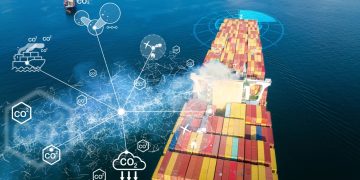A greater understanding around the comparative pricing, vessel performance, and procurement of marine fuels is required to avoid costly mistakes as companies are planning their decarbonization pathway, the industry coalition SEA-LNG advised.
The statement comes as the coalition examined the individual capabilities and requirements of low emissions ‘future fuels’, including the impact that fuels’ energy density has on newbuild and retrofit investment decisions, on the size and cost of fuel storage systems, on available cargo and passenger space, vessel design, deadweight tonnage and on fuel purchasing for operators and owners.
Understanding the different physical properties of current and future marine fuels is critical for the industry to make the right investment and fuel procurement choices. Getting it wrong will be costly. We need to understand and standardize the methodology now, so that the industry can start basing its fuel comparisons on a level baseline,
…said Wärtsilä’s John Hatley and Chair of SEA-LNG’s Investment Working Group.
[smlsubform prepend=”GET THE SAFETY4SEA IN YOUR INBOX!” showname=false emailtxt=”” emailholder=”Enter your email address” showsubmit=true submittxt=”Submit” jsthanks=false thankyou=”Thank you for subscribing to our mailing list”]
As explained, with an influx of new fuels coming into the market, evaluating fuel performance and price by metric tonnes is no longer fit for purpose without the correct context, as the energy density of fuels will vary depending on their type and energy properties.
This means that, when looking at vessel investment decisions, volumetric energy density needs to be considered. The less storage space required for fuel means more space will be available for cargo.
Looking ahead, when hydrogen-based fuels such as green synthetic LNG and green ammonia become available from renewable energy sources, volumetric energy density will be important to ensure owners maximize the performance and value of their vessel investments. The lower energy density will have an even bigger impact on vessel design, deadweight tonnage, cargo volume and passenger space.,
…SEA LNG said.
For example, liquefied ammonia has approximately half the volumetric energy density of synthetic LNG and therefore requires twice the storage capacity. In addition, the size and cost of the storage systems are affected by factors such as insulation and containment for cryogenic liquids, containment pressure and critical safety requirements. This will likely mean less cargo capacity and the need to plan for a variety of design implications.
Gravimetric energy density is how much energy a fuel contains in comparison to its mass. This measure is critical when comparing the energy costs of different fuels. When buying fuel, the transaction is really about buying energy to propel the ship and power any auxiliary operations.
Understanding how much energy you are buying is, therefore, an essential component of the bunker transaction. LNG offers a lower energy cost compared with traditional marine fuels. When compared with VLSFO, LNG’s energy cost per metric ton starts with a 20% advantage because it contains 20% more energy per metric ton.
We must be clear on how fuel composition, pricing and performance measures are calculated. Similar to the need for like for like comparisons when considering the full lifecycle analysis of future fuels, unless energy density comparisons are made accurately, we will continue to see a distorted picture. This can seriously skew vessel operating forecasts and is an obvious concern when considering newbuild and infrastructure investments. Shipowners and operators must have accurate and valid information to support shipping’s decarbonization pathway,
…noted Peter Keller, Chairman, SEA-LNG.

































































